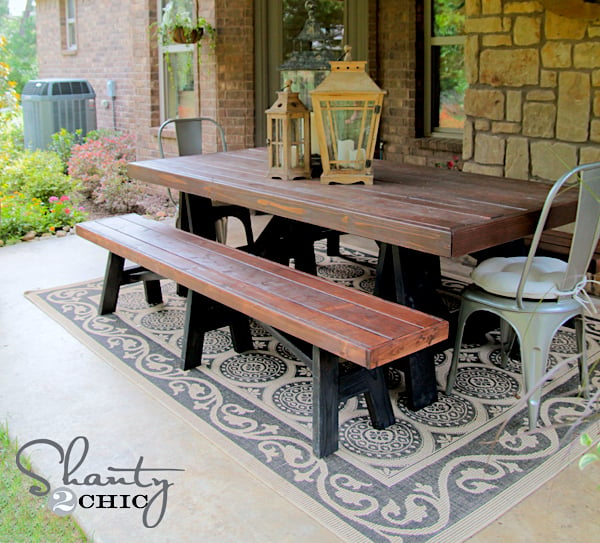
Build your own outdoor benches to match our Sawhorse Outdoor Table Plans.
Free step by step plans with diagrams from Ana-White.com
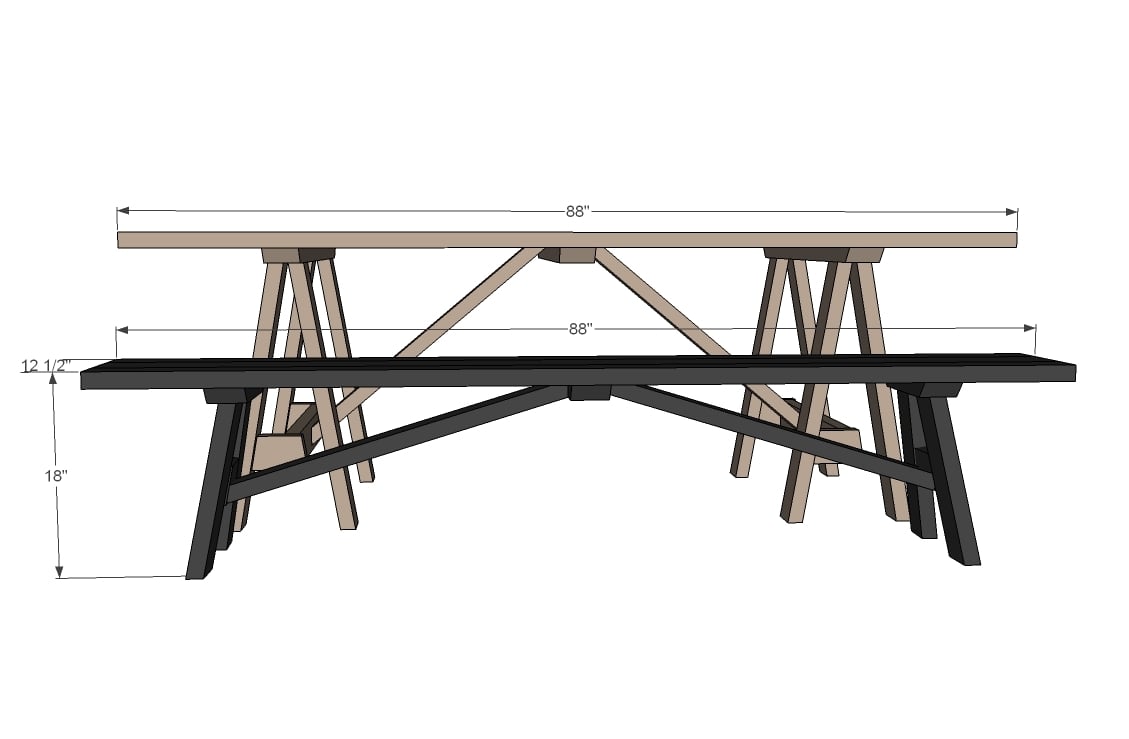
Preparation
5 - 2x4 @ 8 feet long
1 - 2x6 @ 8 feet long
- 4 - 2x4 @ 15 1/2" long (both ends cut at 10 degree double bevel ends ARE parallel)
- 2 - 2x4 @ 15 1/4" long, both ends cut at 10 degree ANGLE off square, ends ARE parallel (not a double bevel like the end legs)
- 3 - 2x4 @ 5 5/8" long (longest point, both ends cut at 10 degrees off square, ends NOT parallel)
- 3 - 2x4 @ 12 1/2" long (both ends cut at 45 degree bevel, ends NOT parallel)
- 2 - 2x4 @ 88"
- 1 - 2x6 @ 88"
- 2 - 2x4 @ 32 1/4" (one end cut at 25 degree bevel, other at 17 degree bevel, cut in same bevel direction)
Please read through the entire plan and all comments before beginning this project. It is also advisable to review the Getting Started Section. Take all necessary precautions to build safely and smartly. Work on a clean level surface, free of imperfections or debris. Always use straight boards. Check for square after each step. Always predrill holes before attaching with screws. Use glue with finish nails for a stronger hold. Wipe excess glue off bare wood for stained projects, as dried glue will not take stain. Be safe, have fun, and ask for help if you need it. Good luck!
Instructions
Step 1
Step 3
Step 4
Step 6
It is always recommended to apply a test coat on a hidden area or scrap piece to ensure color evenness and adhesion. Use primer or wood conditioner as needed.


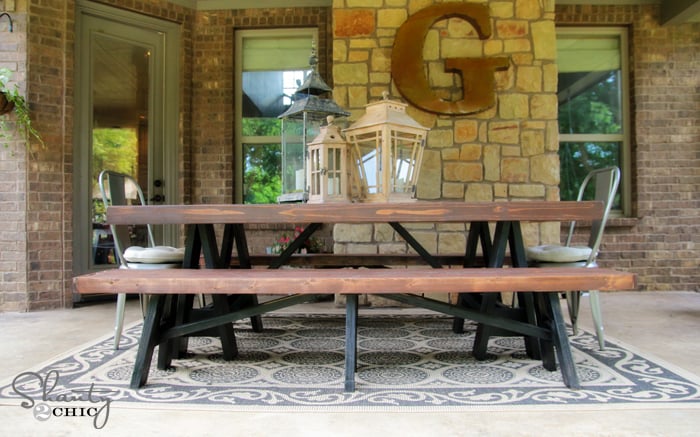
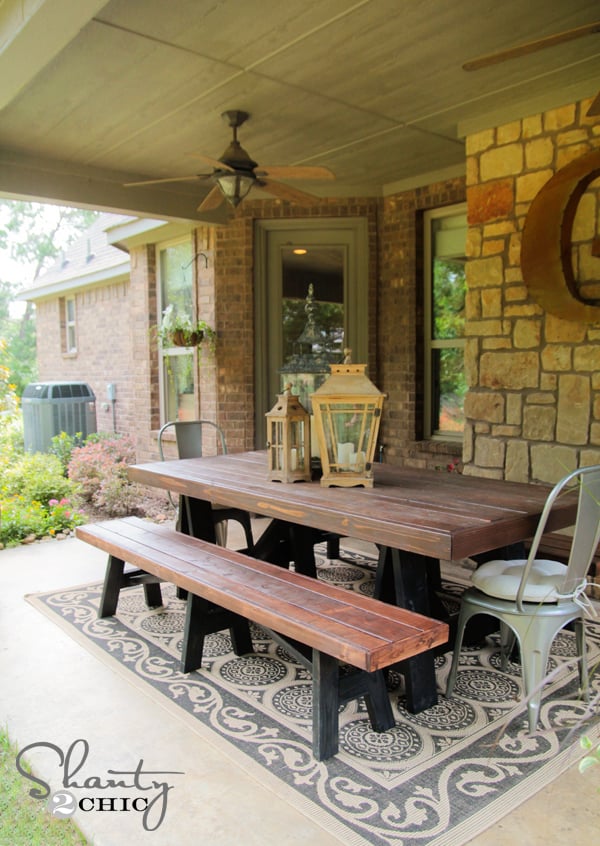








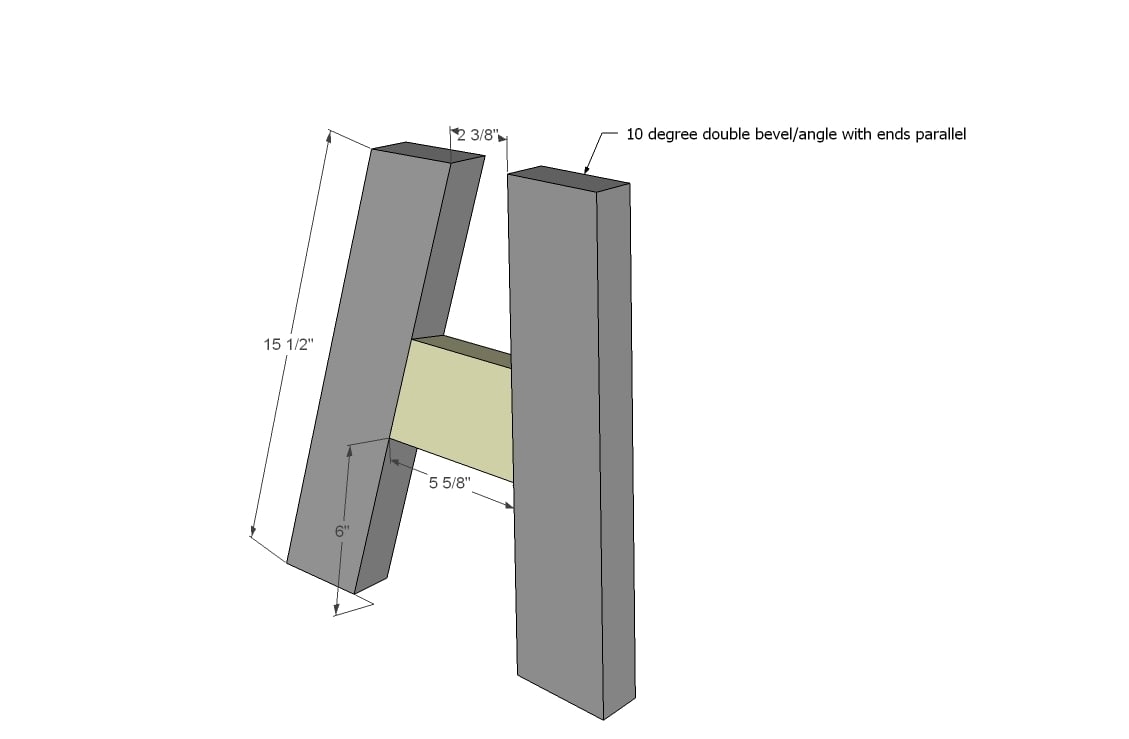
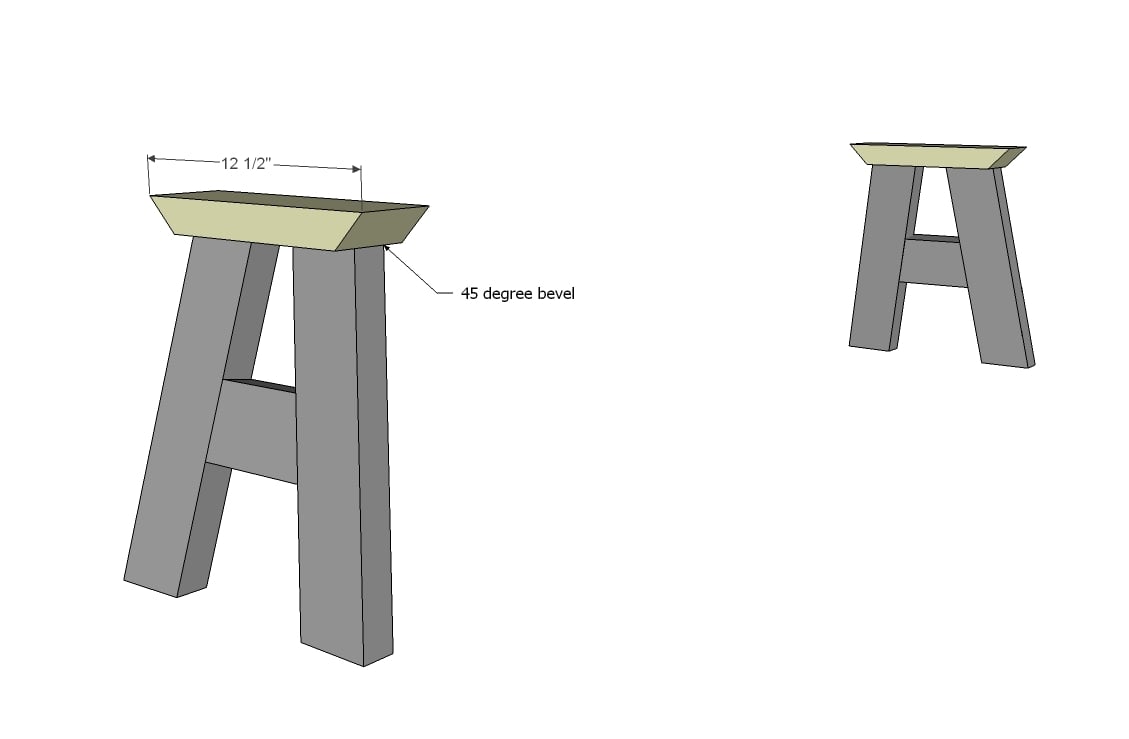
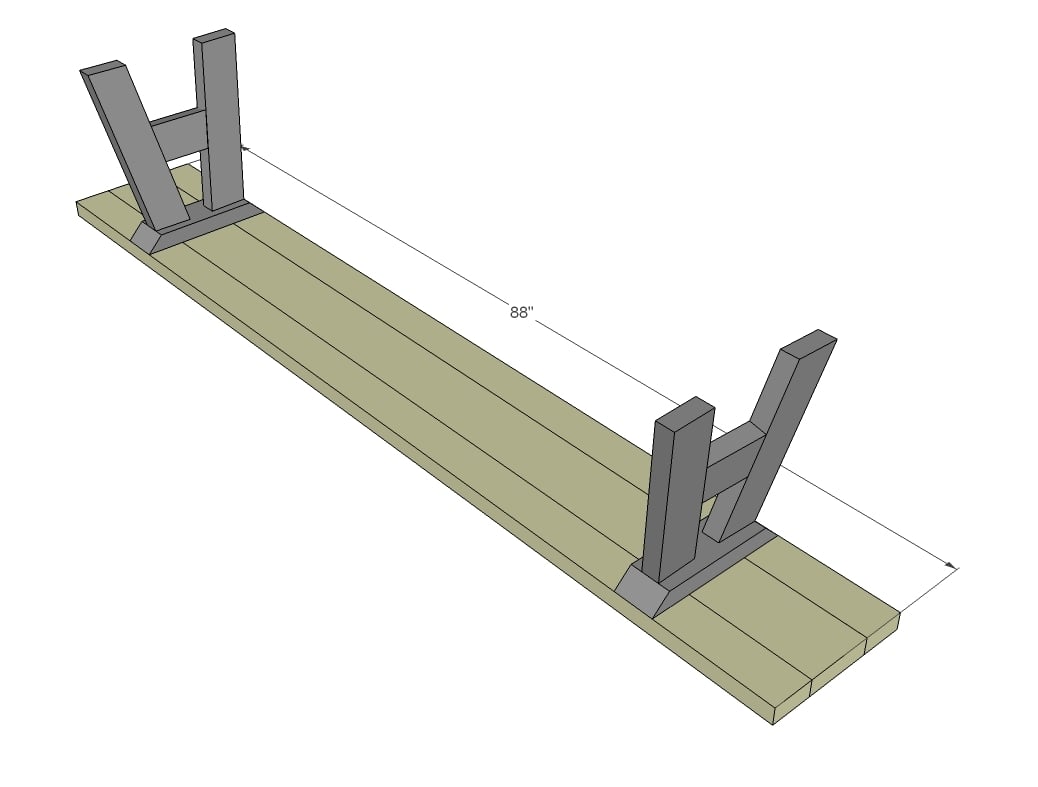
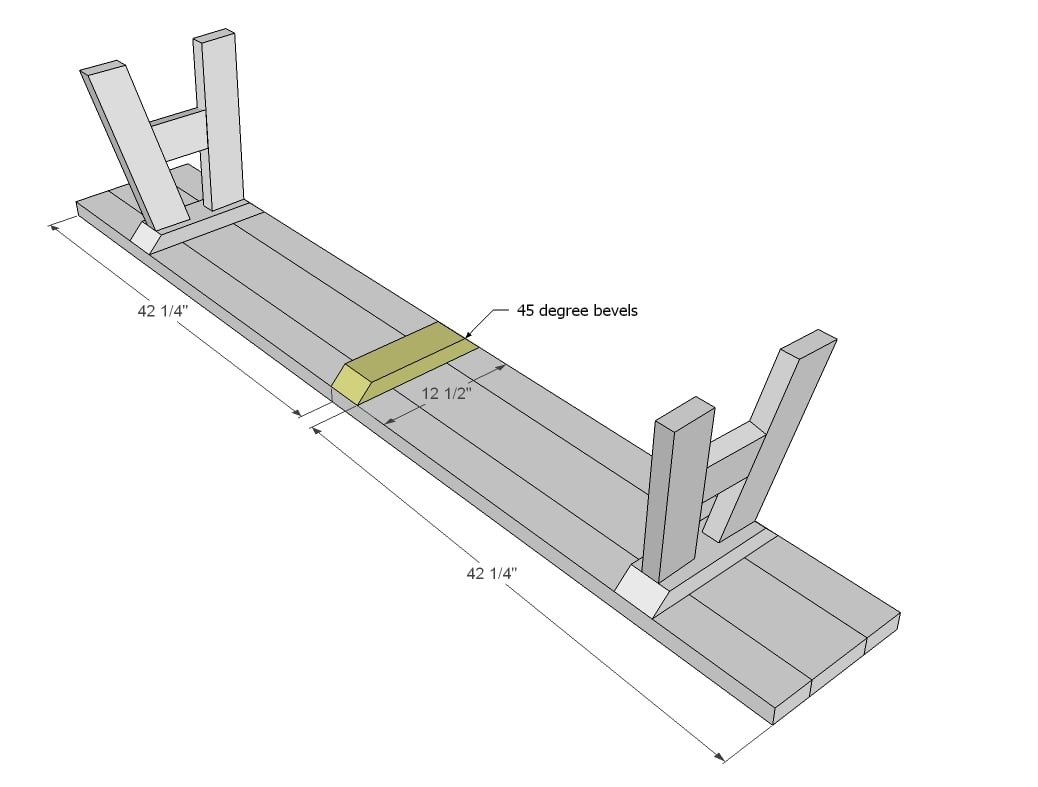
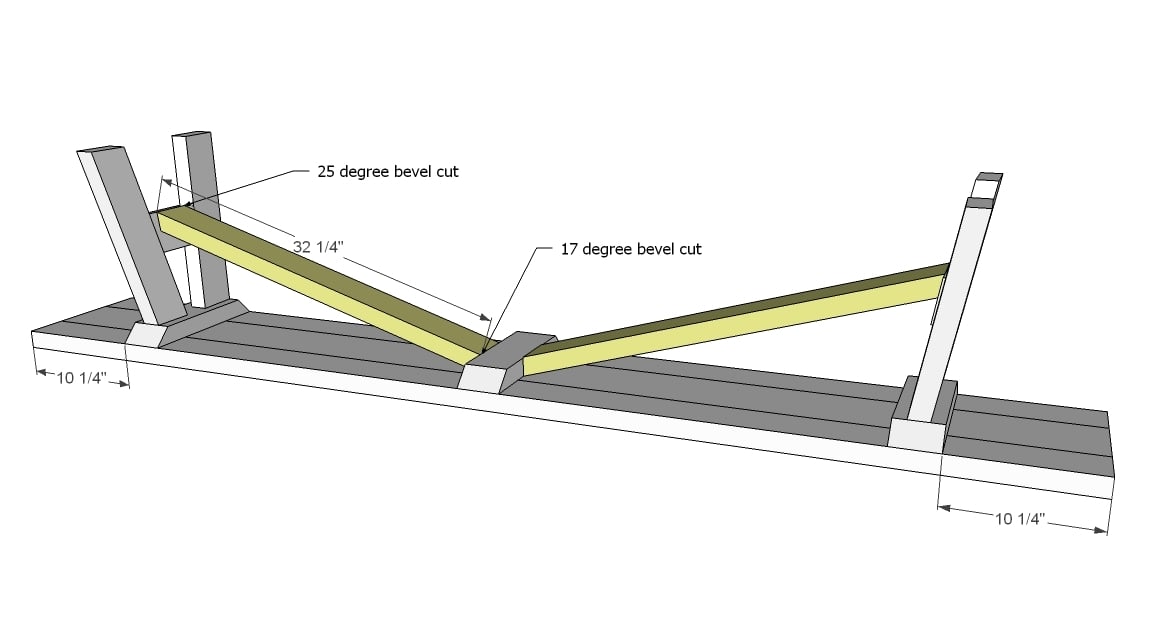
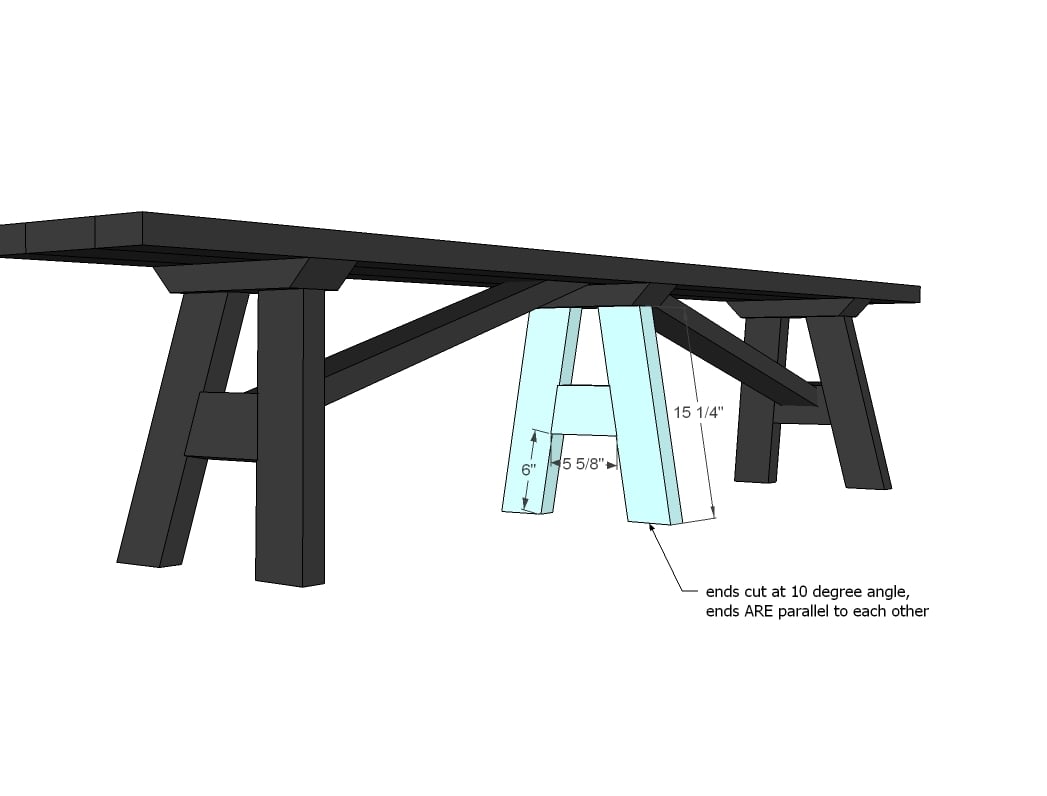
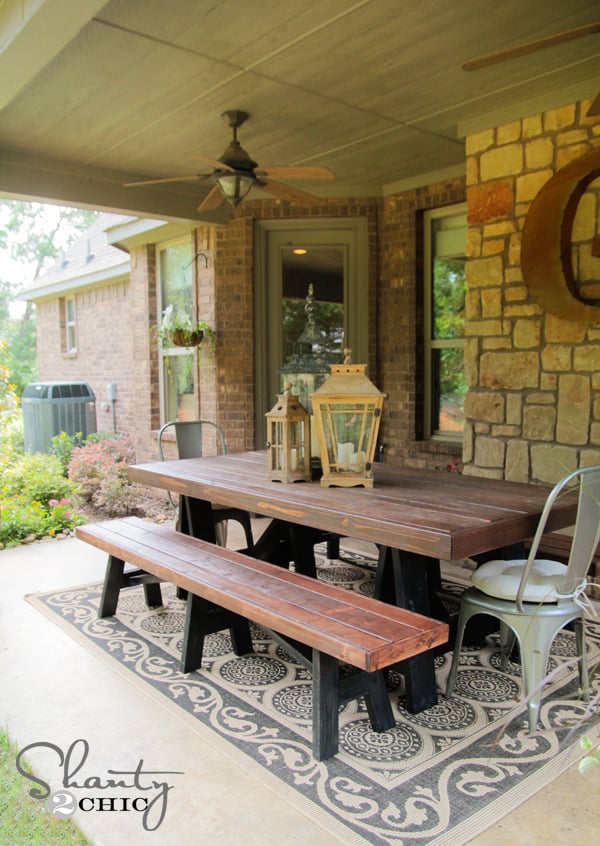
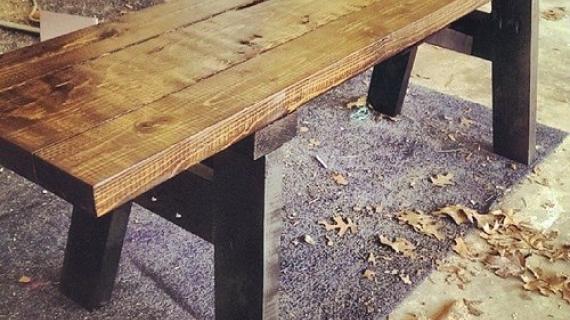

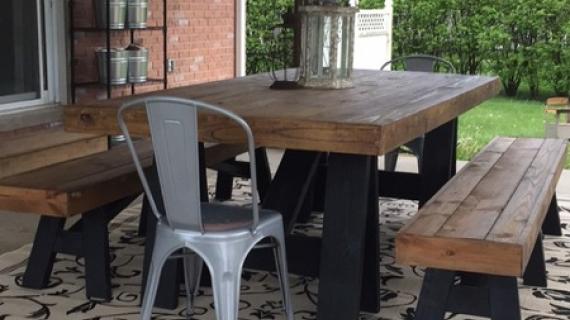
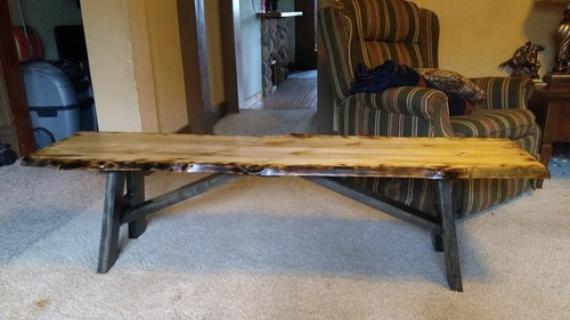

Comments
spiceylg
Tue, 06/25/2013 - 04:35
Wow
Do you two ever stop building? LOL! Another great collaboration and beautiful build by the Shanty2Chic girls! Love that carpet, too!!! Oh yes, the lanterns as well. The whole setting = beautiful!
Bond
Fri, 07/26/2013 - 07:36
what kind of wood was used
Love the table, but I am wondering is the best type of wood for this project. Would it be better to use pressure treated wood and cedar or just plain 2 x 4 untreated.
thanks
Bond
Fri, 07/26/2013 - 07:37
what kind of wood was used
Love the table, but I am wondering is the best type of wood for this project. Would it be better to use pressure treated wood and cedar or just plain 2 x 4 untreated.
thanks
jteixeira
Thu, 05/28/2015 - 16:54
Did you use pressure treated
Did you use pressure treated wood?
In reply to Did you use pressure treated by jteixeira
Ana White
Fri, 05/29/2015 - 13:30
Take a look at this posthttp:
Take a look at this post
http://www.shanty-2-chic.com/2013/05/diy-table-pottery-barn-inspired.ht…